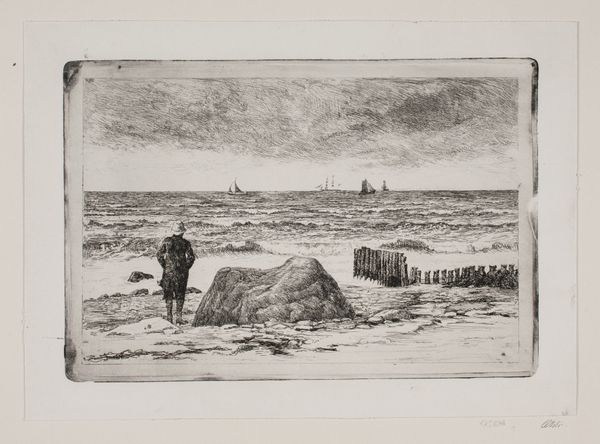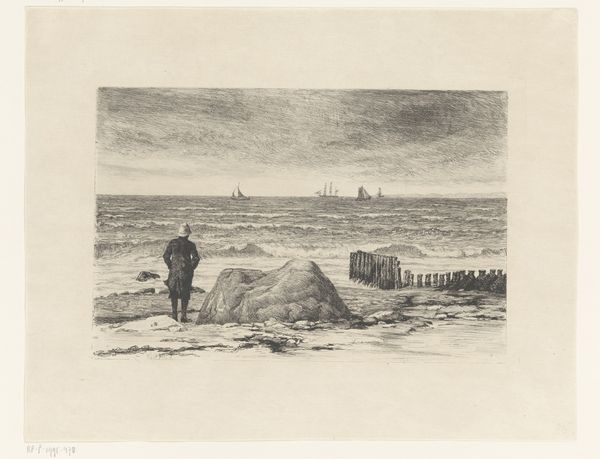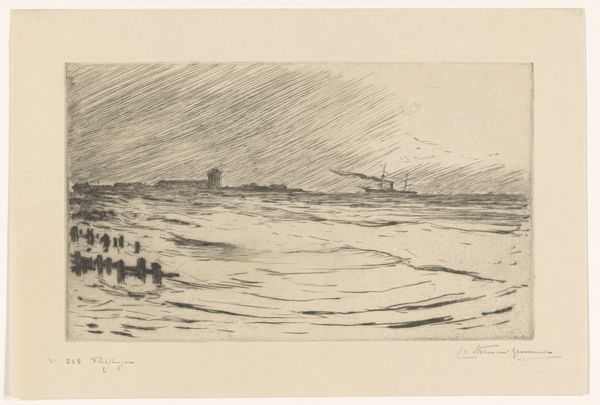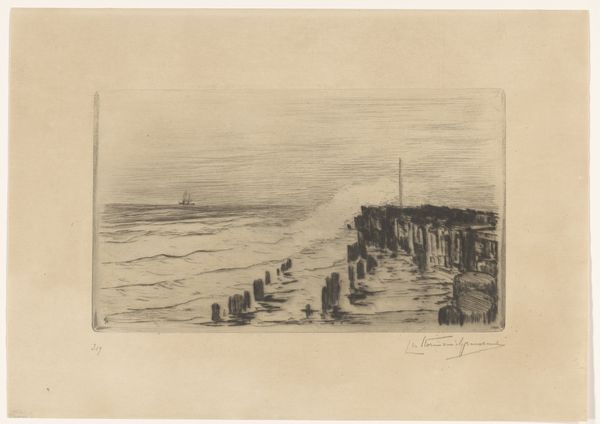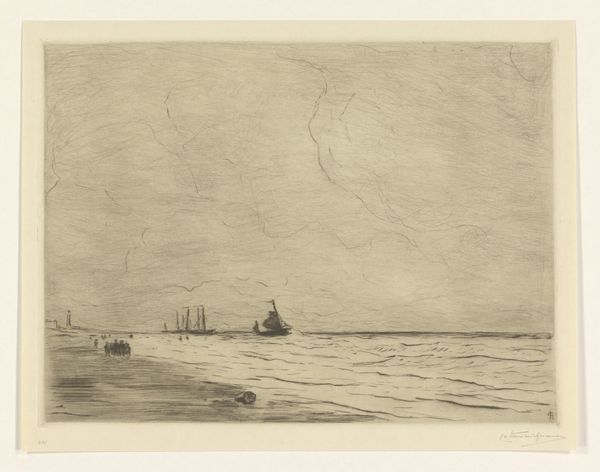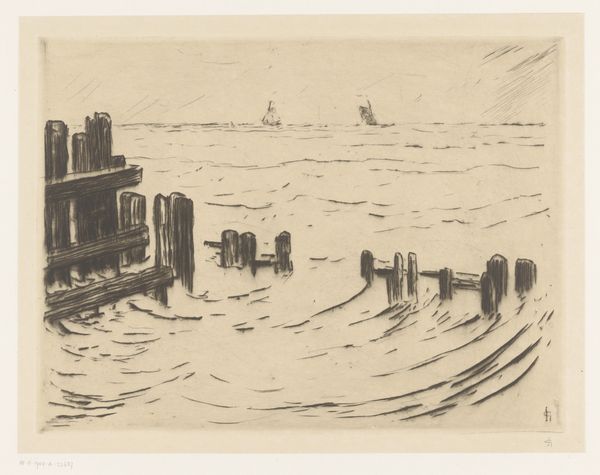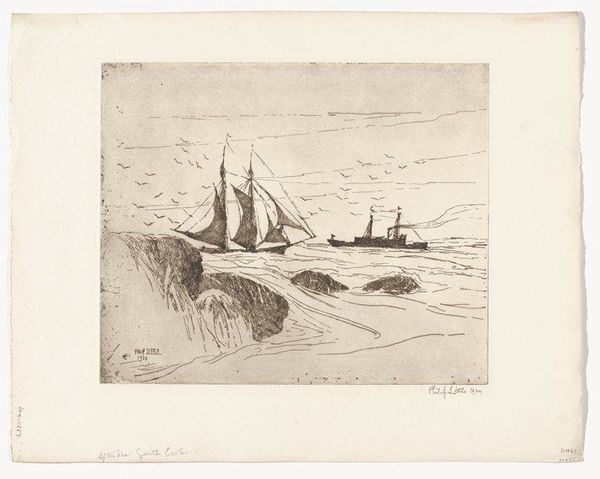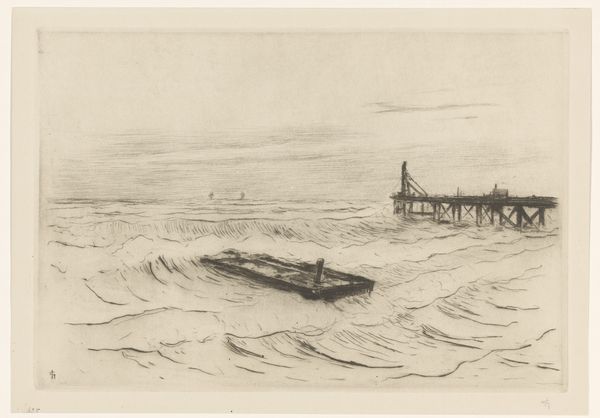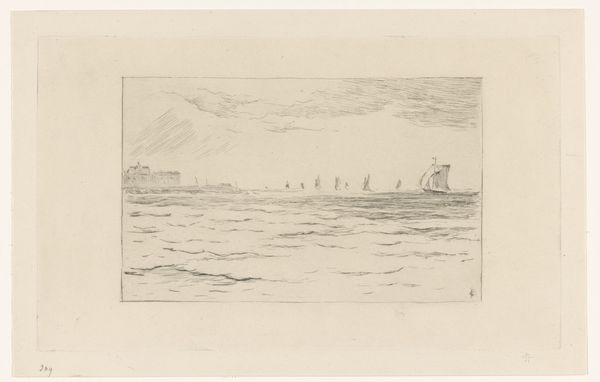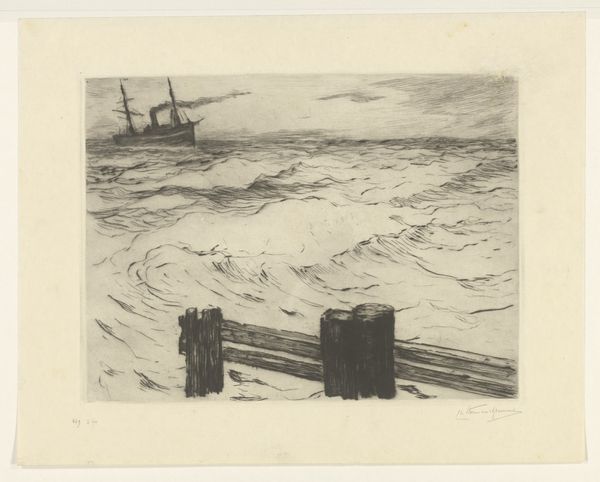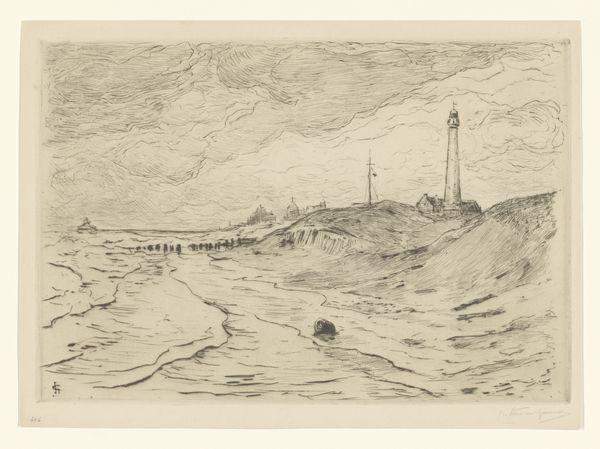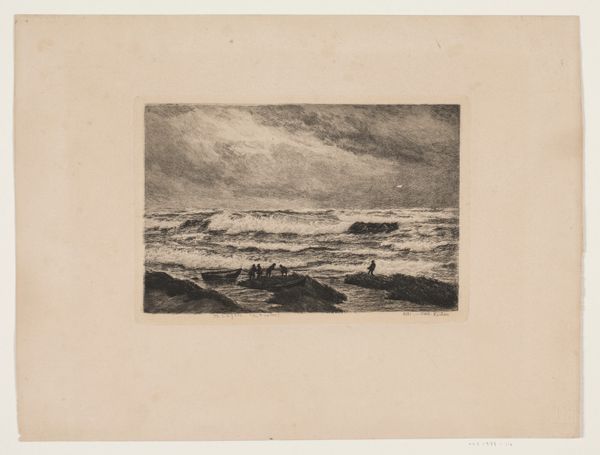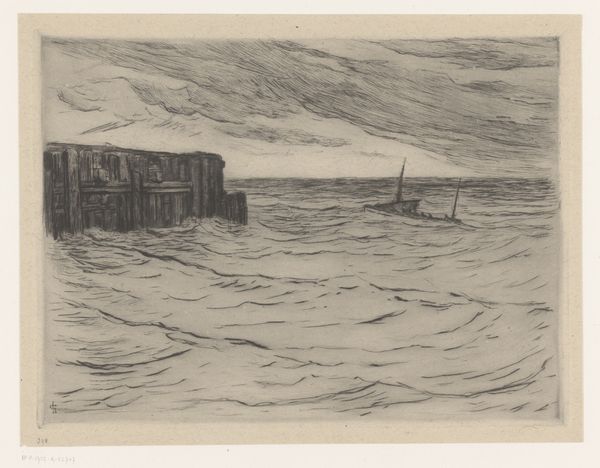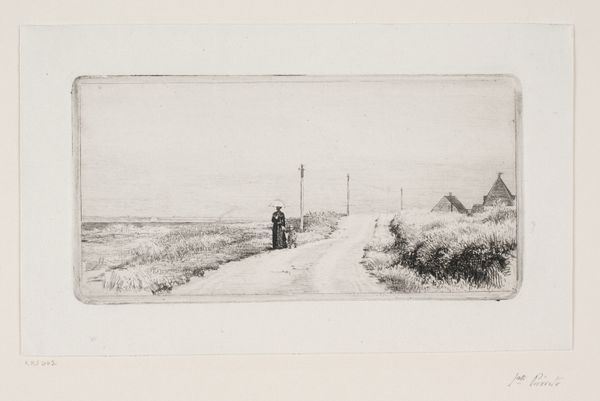
print, etching
# print
#
etching
#
landscape
#
realism
Dimensions: 215 mm (height) x 299 mm (width) (bladmaal), 168 mm (height) x 250 mm (width) (plademaal)
Carl Bloch created this seascape, Blæsevejr. Søstykke, using etching, a printmaking technique that utilizes acid to corrode the unprotected parts of a metal surface to create a design. The etching process begins with a metal plate covered in a waxy, acid-resistant ground. The artist scratches an image into the ground with a pointed needle, exposing the metal. The plate is then submerged in acid, which bites into the exposed lines, creating grooves. The remaining ground is removed, ink is applied to the plate, and the surface is wiped clean, leaving ink only in the etched lines. Finally, the plate is pressed onto paper, transferring the image. The network of lines is dense, but it opens up the scene. The textures and tonality create an effect of breezy openness, rather than a stolid, static scene. Printmaking democratized art by enabling mass production and dissemination. This had significant social and cultural implications. Understanding etching and the work involved in it, helps us appreciate its role in expanding access to visual culture and shaping artistic expression.
Comments
No comments
Be the first to comment and join the conversation on the ultimate creative platform.
